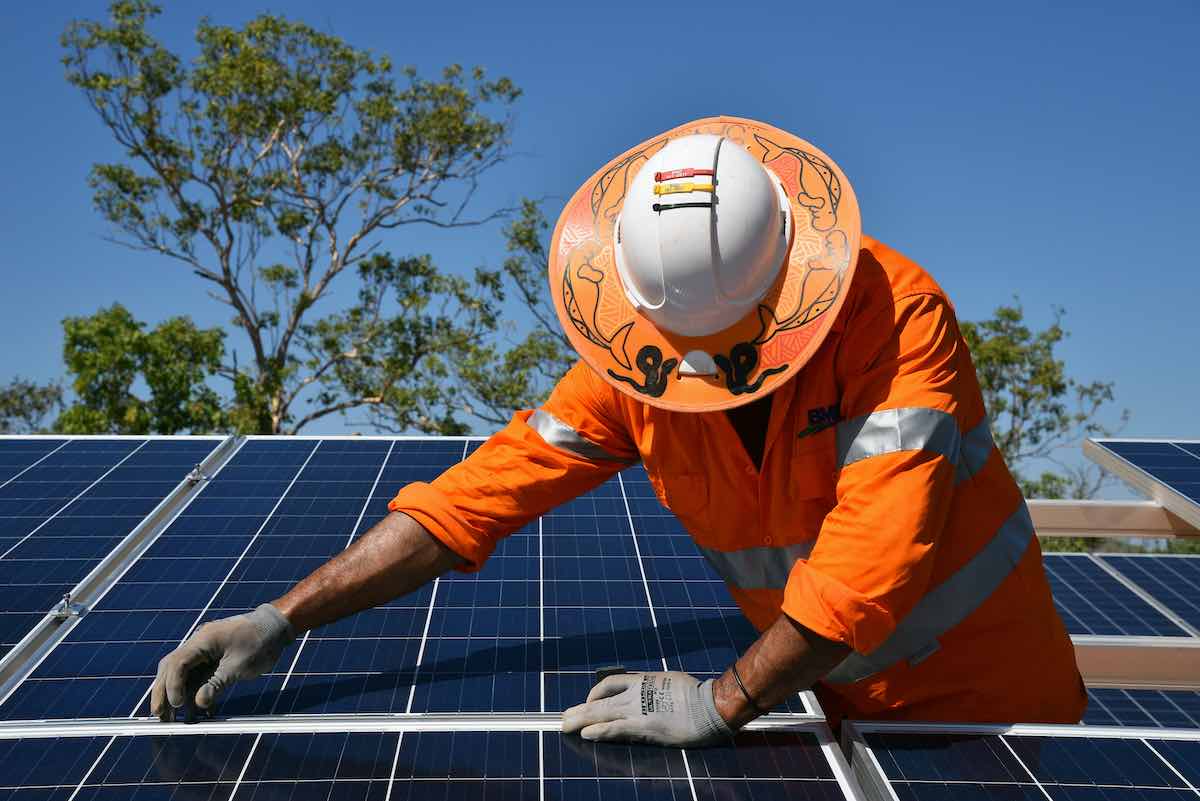Our skills shortfall is now the central impediment to achieving our climate goals and meeting our energy needs. Jobs and Skills Australia puts it plainly: “We need more electricians.” And our training system is in crisis.
Jobs & Skills Australia says we must attract an additional 32,000 electricians by the end of the decade. Then, by 2050, we’re projected to need 85,000. So can we import these electricians?
The answer is, no. Electricians and energy workers are about to become as scarce and indispensable as the rare metals used in batteries.
Unlike the mining boom, when the Howard government papered over skills shortages by blowing the gates off the temporary work visa regime, the pool of overseas workers this time simply doesn’t exist.
Those workers are already stringing lines in California or rewiring homes in Germany. Australian capital and policy makers simply will not have the lazy luxury of importing the problem away.
This isn’t to say that it will be impossible to find skilled electricians willing to come to Australia. It just means we’re not going to find anywhere close to 115,000 of them by 2050.
The shift that is happening in Australia is happening, albeit at different speeds, everywhere. The global energy transition is the substitution of renewable electricity for all other energy sources.
While we will use half as much energy, we will use twice as much electricity while shifting away from coal, gas, diesel, and petrol.
The entire globe is installing rooftop solar, constructing large scale clean energy generation, building out electricity transmission and distribution networks, and electrifying homes and business to dispense with gas.
Every nation will undergo this transformation. The question is whether it is smooth and efficient or disorderly and expensive.
While Australia has an excellent head start through the penetration of rooftop solar, abundant landmass and sunshine, our training failure is significant.
We have invested far too little in the last decade and a half preparing for this challenge. Trades training has been run down. Misguided deregulation and privatisation looms large. The former Coalition government had no coherent energy policy.
The only way to fix this problem is through a very focused and very aggressive training push. And we need to start yesterday.
For electricians alone, we need an extra 20,000 electrical apprentices commencing each year for the next three years, to meet our 2030 targets, based on current completion rates. That’s more than a 240% increase on the current base.
We do not have the facilities, the teachers, nor – most crucially – the workers to do this. Without a significant expansion of ambition and capacity, this forecast will not be met and the energy transition will be doomed.
This challenge would be extreme if it were just electricians in scarce demand, but it is far more than that.
At least 10,000km of transmission line must be strung under Rewiring the Nation, yet there is a grand total of thirty-two (32) apprentice transmission lines workers.
That’s on top of needing more engineers, more machinists, more plant operators and more community liaison officers. The list is long and stretches across both University and VET pathways.
The government’s current, lackadaisical approach to delivering the energy workforce puts the energy transition at risk and wastes the enormous opportunity before us.
Government must pull its finger out and aggressively deliver more and better opportunities to apprentices and support them to actually complete their training. TAFE and industry registered training organisations must be expanded, and vocational teaching must become a better rewarded, more attractive career.
The good news is that while training the energy workforce is an expensive necessity, it is also a singular opportunity to provide great careers to hundreds of thousands of Australians.
Being an electrician can represent a fulfilling, productivity-boosting and well-paid career. A workforce for the 21st Century will unleash the promise of a renewables future, and drive growth in our regions.
Government must partner with unions and industry to unleash this potential. Rather than frittering away hundreds of millions of taxpayer dollars into failed schemes, like the Apprenticeship Support Networks, government must partner with the people actually doing the job.
At root, the problem is not complex: We need to increase commencements and completions. It is complicated, however, because it will require driving investment in TAFEs and industry registered training organisations (typically done through state governments) while drastically improving support services for apprentices (a mix of federal and state programs).
But most critically, it requires government to actually require training outcomes on government financed projects. Industry won’t invest in training if it renders them uncompetitive.
To deliver the apprenticeships we need, special investment vehicles like the Clean Energy Finance Corporation need to stop treating projects as discrete, disconnected pieces of work. This is a 27-year push to 2050, so failing to invest in training on one project will drive up the cost of the next.
The government’s commitment to an Australian Skills Guarantee, where 1 in 10 workers on government construction projects must be an apprentice or trainee, is a good start. But its scope will be restricted and the training outcomes untargeted.
Rather, we need the acronym soup of the CEFC, NRF, PRF, EFA to mandate explicit training outcomes for key trades into contracts. Energy projects must deliver a skills dividend.
And we need to deal with the timing mismatch. An electrical apprenticeship takes four years but a solar farm build takes 18 months.
Again, unions and employers have developed a fix, they’re called group training organisations. GTOs allow for the rotation of apprentices and trainees across projects in industries.
When it works, it delivers well rounded tradespeople with experience across sectors. But even here, training is hampered by the financing model.
Companies can’t hire apprentices if they haven’t won the contract. So we’re constantly chasing our tail with a scramble for apprentices once the tender has been awarded.
By incorporating training as a dedicated outcome, the investment vehicles can finance GTOs to enter the field before final contracts are awarded, allowing for apprentices to start training six or 12 months out.
This provides an immediate, tangible outcome for local communities and provides a natural counterweight to NIMBYistic voices.
Reviving a culture of training is the only way Australia can become the renewables superpower it should be. We need more sparkies to keep the lights on.
Michael Wright is national secretary of the Electrical Trades Union









